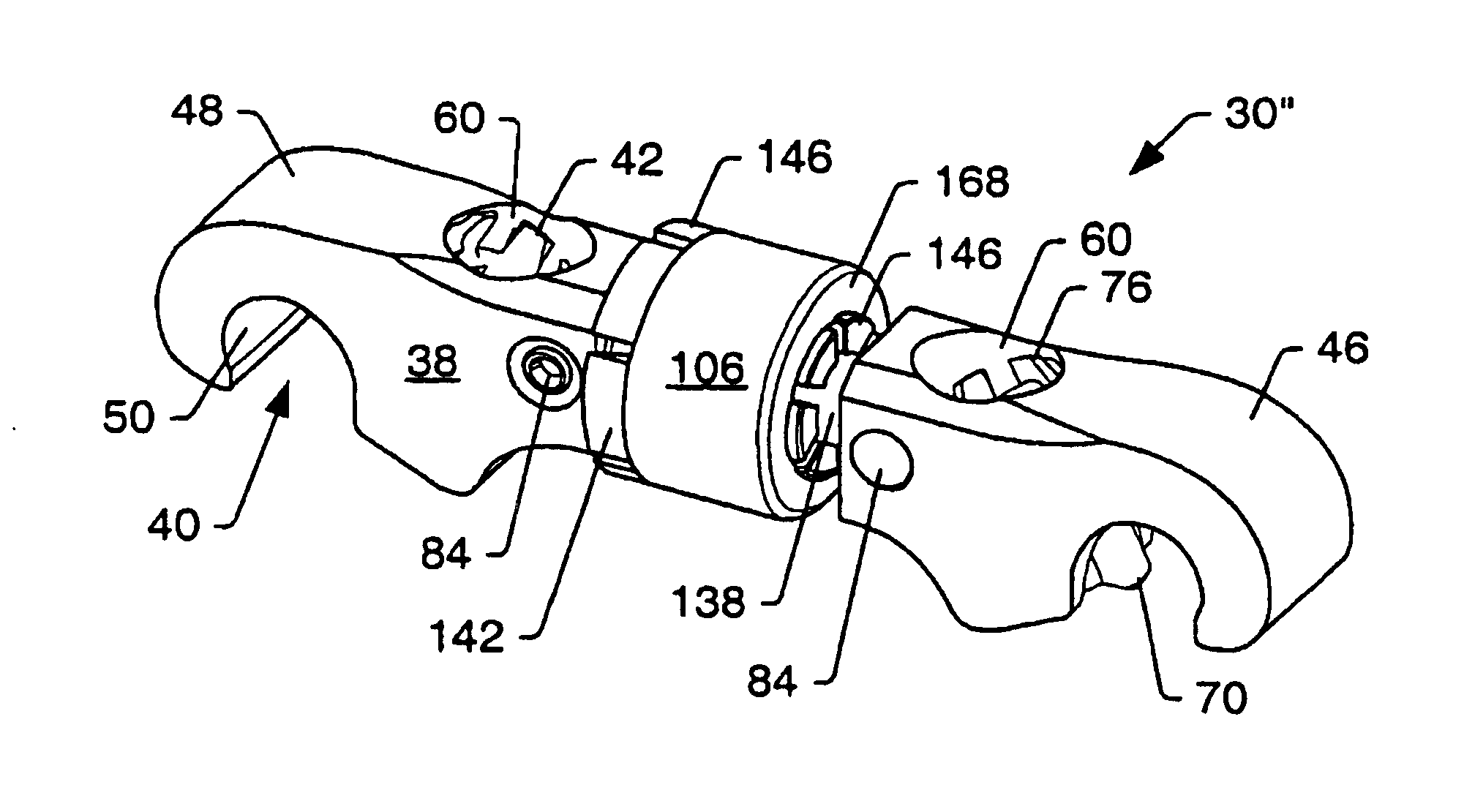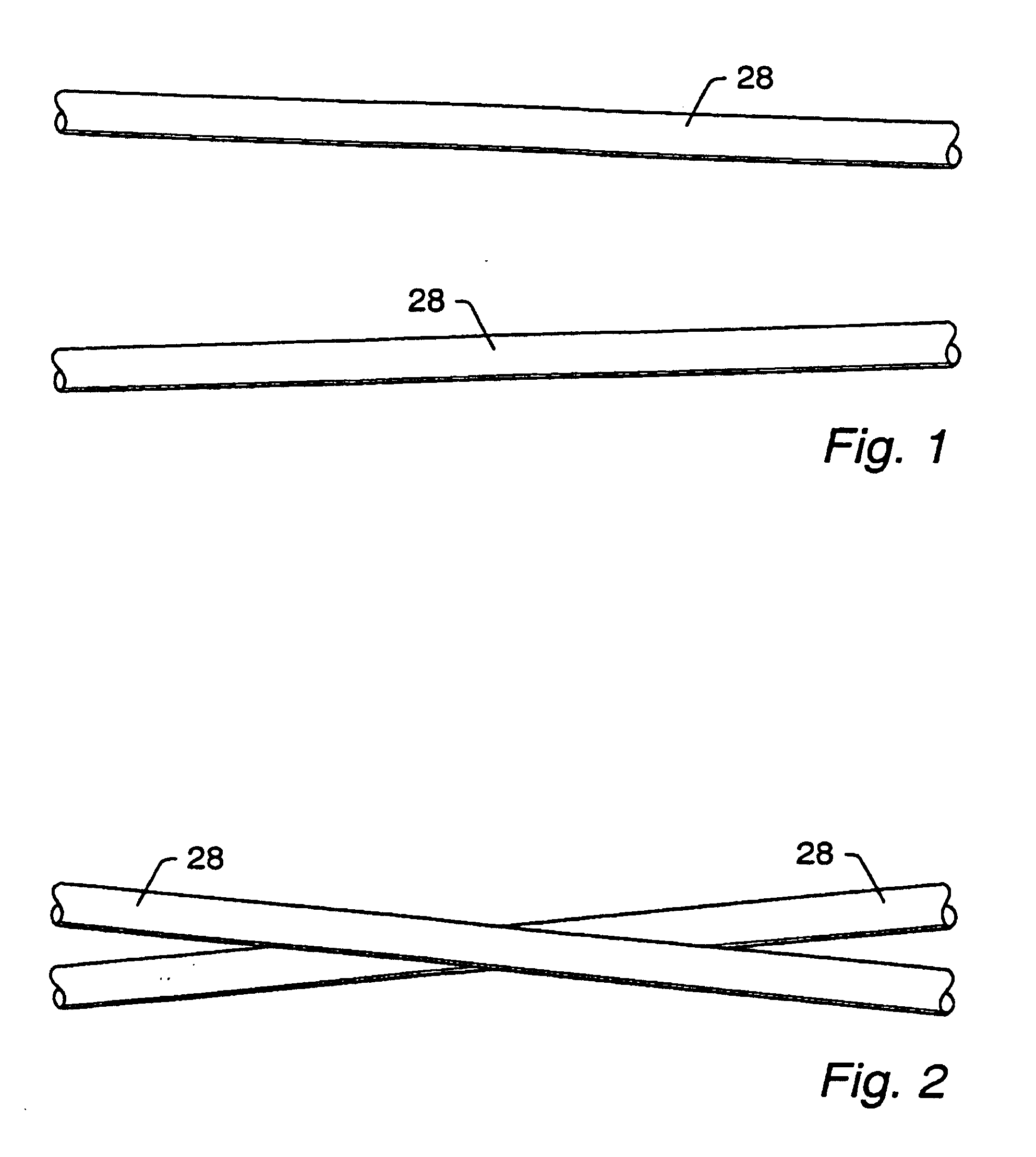Adjustable transverse connector
a transverse connector and adjustable technology, applied in the field of transverse connectors, can solve the problems of one or more problems, the inability of the transverse connector to connect rods that are skewed relative to each other, and the need to stabilize the spine of a patient, etc., to achieve the effect of convenient bending of the transverse connector
- Summary
- Abstract
- Description
- Claims
- Application Information
AI Technical Summary
Benefits of technology
Problems solved by technology
Method used
Image
Examples
Embodiment Construction
With reference to the drawings, transverse connectors are denoted generally as 30. Transverse connectors 30 may be used to connect elongated members 28 of an orthopedic stabilization system 32 together. Transverse connectors 30 may provide rigidity to the orthopedic stabilization system 32. Transverse connectors 30 may also inhibit undesired motion of the orthopedic stabilization system 32. Transverse connectors 30 may be fixed length transverse connectors or adjustable length transverse connectors. The elongated members 28 of an orthopedic stabilization system 32 may be coupled to bones 34 by fixation elements 36. The fixation elements 36 may be, but are not limited to, hooks and bone screw connectors. In an embodiment, the elongated members 28 are spinal rods that are coupled to vertebral bodies 34 by fixation elements 36. The spinal rods 28, fixation elements 36, and transverse connectors 30 form part of a spinal stabilization system 32. FIG. 3 shows a portion of an embodiment of...
PUM
 Login to View More
Login to View More Abstract
Description
Claims
Application Information
 Login to View More
Login to View More - R&D
- Intellectual Property
- Life Sciences
- Materials
- Tech Scout
- Unparalleled Data Quality
- Higher Quality Content
- 60% Fewer Hallucinations
Browse by: Latest US Patents, China's latest patents, Technical Efficacy Thesaurus, Application Domain, Technology Topic, Popular Technical Reports.
© 2025 PatSnap. All rights reserved.Legal|Privacy policy|Modern Slavery Act Transparency Statement|Sitemap|About US| Contact US: help@patsnap.com



